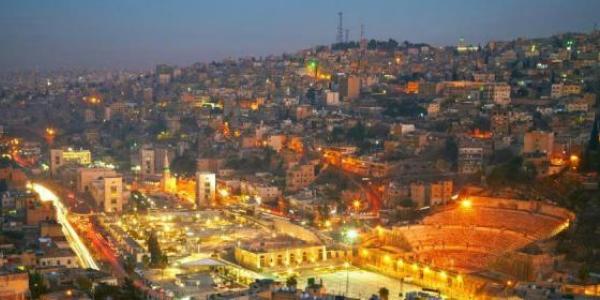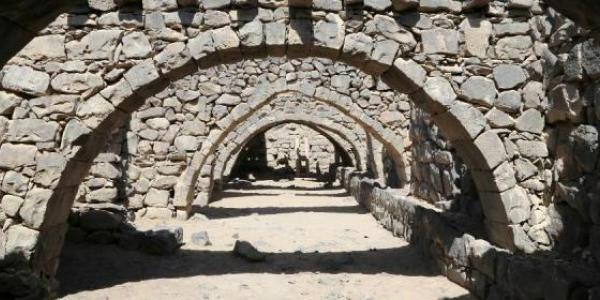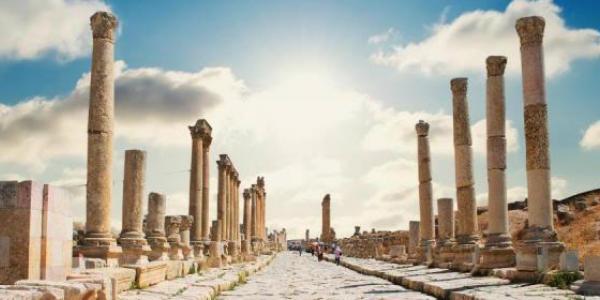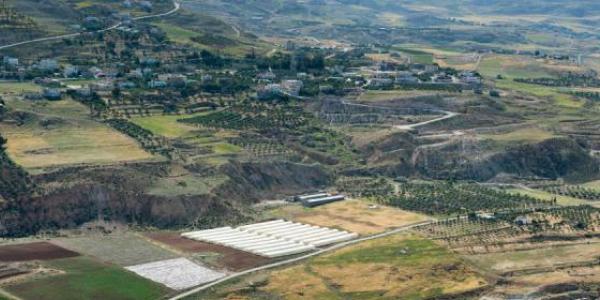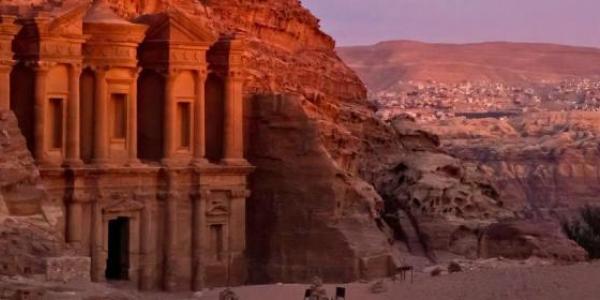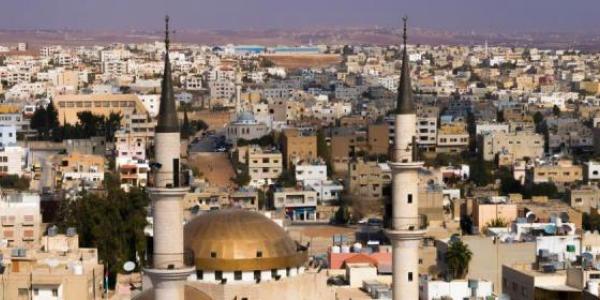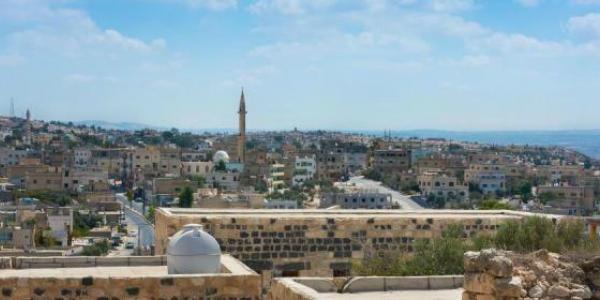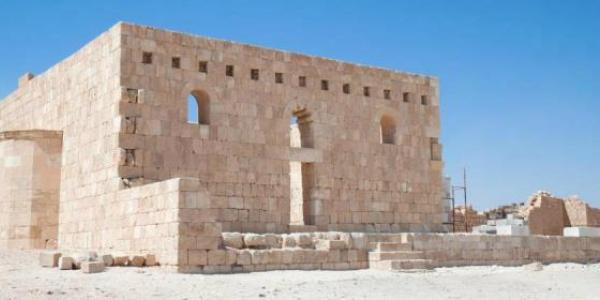Zarqa is an important hublink to some of the most famous Umayyad sites. Qasr al-Hallabat and Hammam al-Sarah are two major Umayyad desert castles that have been restored by the Spanish Archaeological Expedition in Amman. In addition, Umm al-Jimal is also an Umayyad site, even if it is famous for its basalt stone remains and some fifteen Byzantine church ruins. Passing through Mafraq from there one can visit Rihab, which has more than thirty Byzantine churches. The earliest of these goes back to mid third century AD and could be the first church ever from ancient times.
Qasr al-Hallabat and Hammam al-Sarah
Located in the eastern desert, around 30 kilometres east Zarqa, Qasr al-Hallabat was originally a Roman fortress, probably built in the third century AD, under the reign of Emperor Caracalla. The reason for building the fortress was to protect its residents from the attacks of Bedouin tribes. It was one of the many stations on the Via Nova Triana Roman highway.
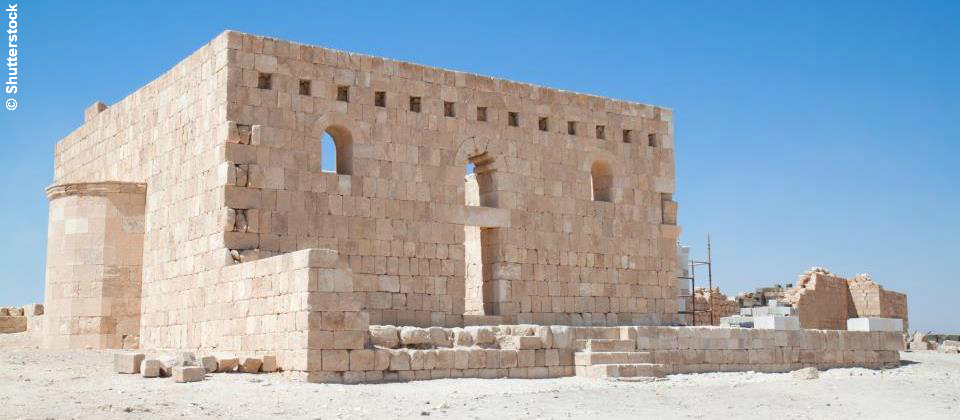
The Umayyad Caliph Hisham Ibn Abd al-Malik ordered the demolishing of the fortress in the 8th century AD and redevelop a grand palace instead. The palace was constructed using basalt and limestone. It has a square plan with a tower on each corner. The entrance in the eastern wall leads to an open paved courtyard surrounded by square and rectangular rooms from three sides. The north western quadrant contains an inner structure of a central courtyard surrounded by rooms also from three sides. Each courtyard has a cistern.
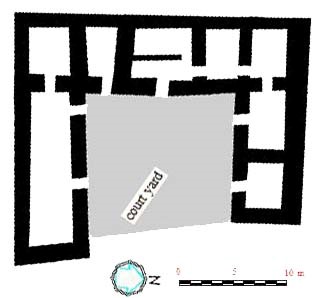
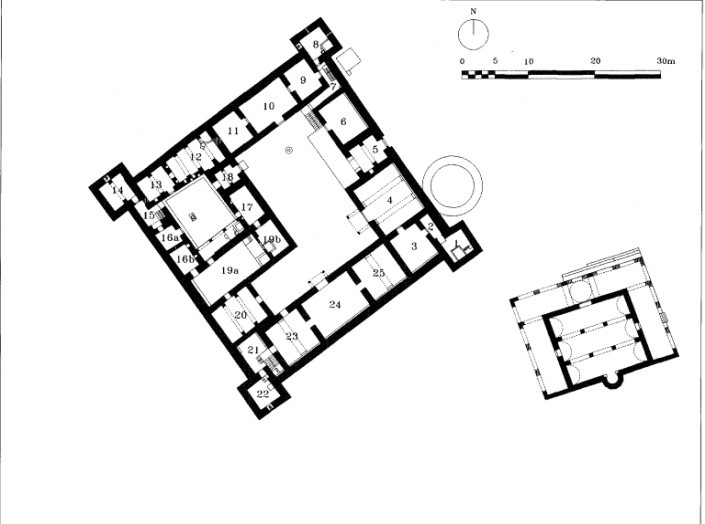
Structure no 19 (left) (Jalboosh, F. Y., 2009, The Architecture Of The Umayyad Settlement Around Qasr Al-Hallabat- Jordan, Hashemite University, Jordan. Master theses) and Plan of the Qasr at al-Hallabat settlement (Arce, I. 2007 Qasr al-Hallabat: Continuity and Change from the Roman-Byzantine to the Umayyad Period. SHAJ, 9: 325-356.
Around 400 m. to the east of the palace, the remains of a mosque (10.70m x 11.80m) were found. It is constructed of limestone and has two arching riwaqs inside dividing it into three sections. Three tunnel vaults support the mosque roof, and are surrounded by a portico from north, west and east. An enclosed structure was also found on the site, which was probably used for agricultural purposes (e.g. cultivating olive trees).
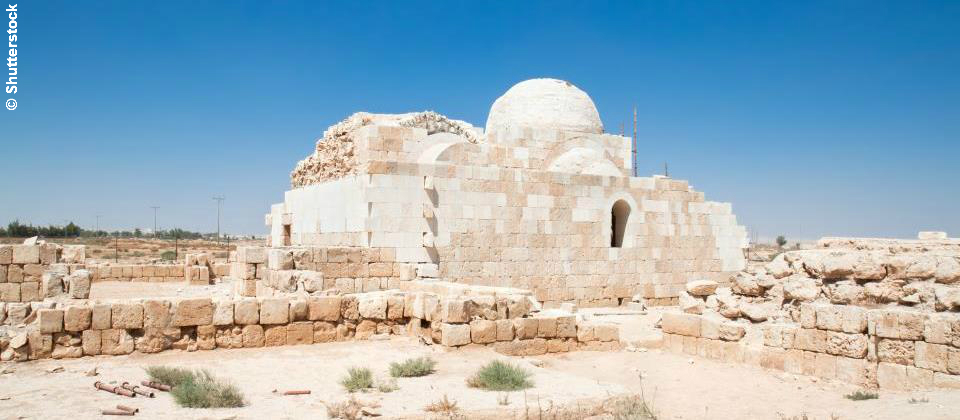
The mosaics that covered the floors of the palace were excavated and thoroughly scrutinized, whether in fragment or in more complete. It was revealed that the mosaics contained several types of designs using geometrical shapes or flora and fauna to make up the external frame or internal separations. Human depiction was also evident. Plants and fruit were commonly introduced to the mosaic floors, such as vines, lotus, and fruit (pomegranates and lemons). There were also a number of animals appearing, such as ducks, ostriches, rabbits, Oryx, camel, leopard, lion, wolf, snake, bull, goat, and a ramp. Some of which were skilfully positioned in an animated-like movement. The Oryx, for example, seemed to be walking slowly with head uplifted, while the wolf was running fast. The rabbit was peacefully nibbling on grass, while the leopard was in an aggressive position. Each room had mosaic floors that differed in quality and topic. Fragments of fresco were also uncovered, holding mostly floral images as well as some human faces, an animal (jackal or dog) and a griffin.
The palace also has a water system with eight cisterns and one reservoir, and a bath complex commonly known as Hammam al-Sarah, two kilometers to the east of the palace. It consists of a rectangular residence hall and a bath, as well as an alcove leads from the audience hall to two small side rooms lit by three narrow windows for each. It is very similar to Qusayr Amra in plan. The hall leads first to the Tepidarium and then the Caldarium and has two semi-circular niches with a central window for each. The dome has eight round openings and is covered with rose-colour cement on the exterior and shale on the interior. The Hammam was once decorated with marble, mosaics and frescoes.
Umm Jimal
The large modern village in the Hauran region, 38 km. north east of Zarqa neighbours and ancient site which is known as the “Black Gem of the Desert” on account of its ancient village built solely from an unusual basalt stone masonry. The ancient village fisrt appeared in the first century AD as a Nabataaean settlement uber the jurisdiction of the famous Syrian city of Bosra, which became the capital of Nabataean Arabia under King rabel II (70-106 AD). Umm Jimal is famous of its inscriptions and housing complex although little of the original Nabataean settlement is left today due to alter construction phases. Early on Under Roman rule, the village enjoyed some indepenedence but this was lost after the quelling of Palmyra’s revolt uner Queen Zenubia in 275 AD. A defensive fort was constructed and urbanization marked its growth, but only to revert into a rural village by the fourth century. Eighteen churches were built during Byzantine times as well as the 150 houses that still survive. Later the Umayyads modified many of the buildings to suit their purposes, and due to an earthquake in 749 AD, the village was abandoned during Abbasid times. The modern village was occupied by Druzes and Bedouins during the early twentieth century. Recently a project run by the UNESCO Amman Office is working with women form the community to improve their livelihood by creating carvings from basalt stone.
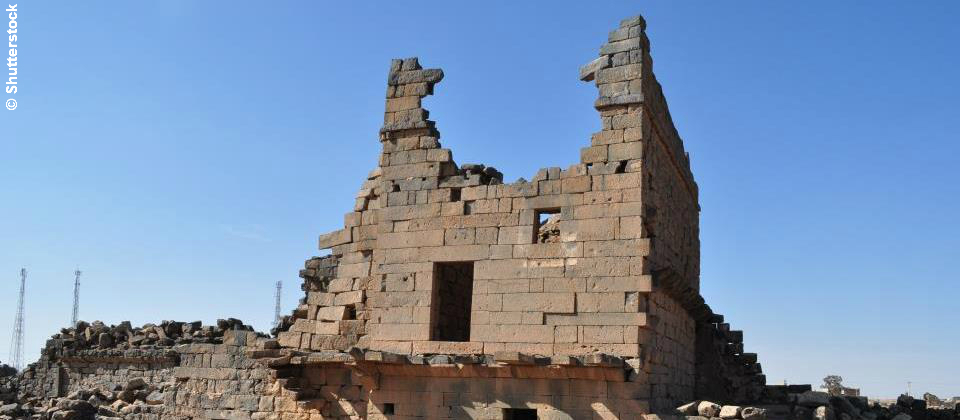
Rihab
The modern village is 27 km north of Zarqa and 10 km. east of Mafraq. It must have been one of the most important Christian centers in Byzantine times as 30 churches were built in it. The most famous of these St. George's Church which seems to have been one of the earliest churches in Christianity is contested by another similar find (1998) in Aqaba. St George’s Church is claimed by Jordanian achaeologists to have been built in about 230 AD although other others contest the evidence and express serious doubt with te expectation that the date should go back to the 5th century only. A very important find is the cave which lies underneath the the church. It is said that it to goes back to the year 33 AD where seventy of Christ’s disciples worshipped in hiding from persecution after his death. The cave has a circular apse with stone seats apse and is connected by a tunnel to a water cistern. Regardless of how old the church is, a visit to Rihab and the churches affords a thrilling experience and an insight into Byzantine Jordan.



